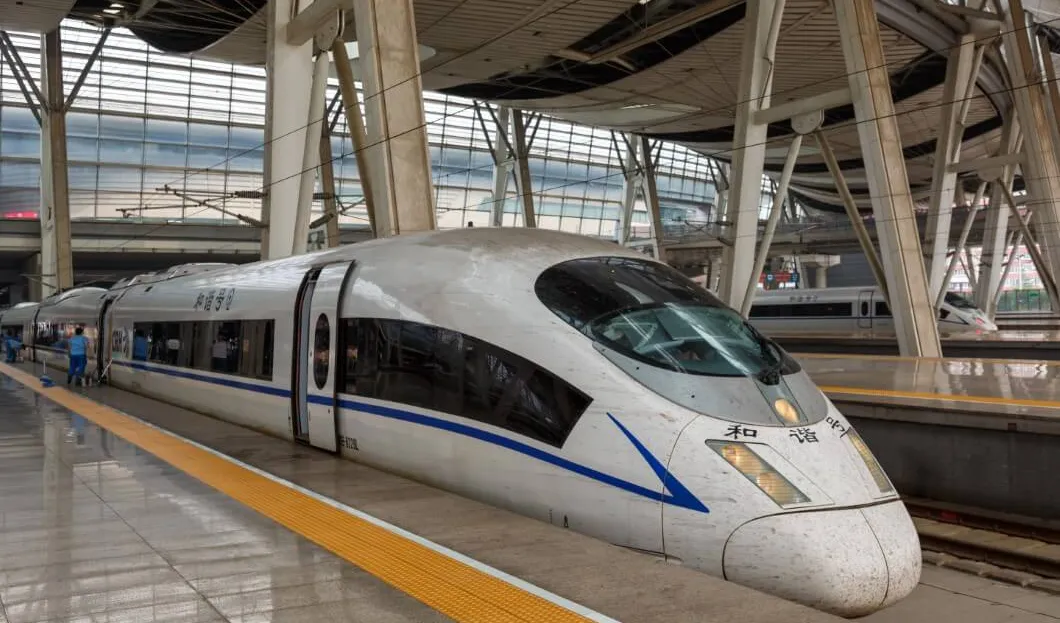
China has made incredible advancements in surveillance technology and railway infrastructure. The first high-speed railway line was constructed in 2008 for the Summer Olympics, covering 117 kilometers between Beijing and Tianjin. In just 15 years, the network has expanded to approximately 40,000 kilometers, covering the entire country and emphasizing its heavily populated eastern region. The government aims to increase the network by another 30,000 kilometers by 2035.
High-speed trains in China have been highly successful, making it the most critical transportation method throughout the country. As a result, domestic flights have been significantly reduced, resulting in fewer harmful emissions.
Lazy Pandas
The Panda research and breeding station in Chengdu, located 2,000 kilometers west of Shanghai, is a popular destination for travelers interested in learning about these fascinating bamboo bears. Chengdu is a bustling city with a population of 16 million and an altitude of 550 meters. However, this altitude is too low for pandas, who typically live at higher altitudes of 2700 to 4000 meters during the summer.
The high-speed train from Chengdu to Xi'an is almost fully booked. Although it's called a high-speed train, it still takes four hours to cover the 750-kilometer distance due to the winding mountainous route, and the train makes several stops along the way. You can purchase drinks onboard, but they are expensive. For instance, a simple cup of coffee in a paper cup costs around $4.50.
Xi'an, Shaanxi Province's northern train station, is designed like an airport. To enter, passengers must pass through the same security measures as those used at airports and are only allowed onto the platform twenty minutes before departure with a valid ticket. Unlike air traffic in China, the train departs on time to the minute.
China's Records
Rail vehicle manufacturers worldwide have tried to enter the Chinese market, including Siemens, Alstom, Bombardier, Mitsubishi, and General Electric. However, the People's Republic only purchased a few foreign-made compositions. As a result, foreign companies had to build manufacturing facilities in China if they wanted to do business with Beijing, allowing the Chinese to access technologies.
Now, the tables have turned, and the People's Republic sells high-speed trains worldwide.
China Railway Rolling Stock Corporation (CRRC) was formed in 2015 through a merger and has since become the largest manufacturer of rail vehicles worldwide. Their products are exported globally, including to Germany and the USA. In 2022, CRRC's sales amounted to nearly €27 billion, surpassing the combined sales of Alstom, Bombardier, and Siemens Mobility, which were €16.5 billion and €9.5 billion, respectively.
Xi'an is well-known for the more than 2,000-year-old mausoleum of Emperor Qin Shi Huangdi, which houses the Terracotta Army - a grand parade of clay warriors. The city's well-preserved walls, adorned with playful towers and fortresses, are also a sight to behold. Chinese markets, such as Xi'an's Muslim quarter, offer various food options known worldwide.

China's new high-speed trains between Beijing and Zhangjiakou covers the 190 km journey in just 45 minutes.
The train from Xi'an to Beijing takes four and a half hours to cover the 1200 km. And the one between the metropolises of Beijing and Shanghai covers more than 1,300 km in just over four hours. The cruising speed is more than 350 km/h, and the maximum speed is 494 km/h. Plans for a magnetic levitation train that have just been presented will break these records; it should reach speeds of up to 600 km/h.









